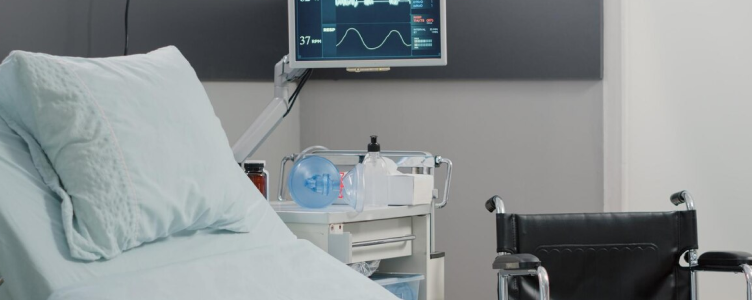
Adhering to industry-specific rules and regulations is essential for most products. It’s even more critical for manufacturers creating printed circuit boards (PCBs) for medical devices and device makers to follow them to the letter to ensure the equipment performs as intended. It’s a matter of life and death.
This guide explains what medical device manufacturers and the circuit producers that support them must know about regulations related to developing safe and effective PCBs and medical equipment.
Medical Devices Dependent on Circuit Boards
Devices that are heavily reliant on circuits include:
- Blood pressure monitors
- Heart monitors
- Pacemakers
- Thermometers
- Cochlear implants
- Imaging and diagnostic instruments
- EMG (electromyography) activity systems
- Neurostimulators
- Handheld monitors.
These devices must function precisely all the time to help diagnose and treat patients. They require many inspections during the manufacturing process and once the machines are in use. Several bodies across the globe have issued guidelines for these instruments.
What are the Medical Device Regulations for PCBs?
Authorities like the Institute for Printed Circuits (IPC), the International Organization for Standardization (ISO), and the U.S. Food and Drug Administration (FDA) have all released standards related to circuit boards used in medical equipment. The guidelines include all aspects of the development and manufacturing process all the way to final approval. It’s mandatory to follow all these regulations during medical PCB assembly to ensure they are reliable and don’t cause harm to patients.
Let’s go deeper into each of these organizations and their regulations.
IPC
The Institute for Printed Circuits is an organization that regulates the assembly and production of electronic components and assemblies. The group has developed and released several critical standards:
- IPC-A-600: Establishes the minimum acceptability requirements for printed boards.
- IPC-A-6012: Describes the qualification and performance requirements for PCBs.
- IPC-A-610: Explains the requirements for acceptable electronic assemblies.
The IPC also has standards for:
- Wire harnesses
- Soldering
- Enclosures
- Cables.
Visit the IPC website to learn more about applicable standards.
ISO
ISO is the acronym for the International Organization for Standardization. The group develops and publishes a range of standards related to the design, manufacture, and testing of circuit boards.
The ISO 9000 standard is mandatory for original equipment manufacturers (OEMs) to certify the safety of medical equipment and its proper function. ISO 13485:2016 is an updated quality management system for MedTech devices centered on current industry practices. It places a strong focus on risk management along with risk-based decision-making. It also provides information related to industry regulatory concerns.
FDA
The United States Food and Drug Administration’s (FDA) Center for Devices and Radiological Health (CDRH) imposes laws on companies that manufacture, re-label, re-package, and import medical devices in and into the U.S. In addition, CDRH monitors electronic products that emit radiation, including X-ray equipment, lasers, ultrasound devices, and others.
FDA categorizes medical devices into three classes:
- Class 1 devices include adhesive bandages, sunglasses, IV (intravenous therapy) stands, and other things considered relatively low risk.
- Class 2 devices include intermediate-risk instruments like powered wheelchairs, syringes, surgical masks, and other similar items.
- Class 3 devices include many high-risk items that use PCBs such as heart valves and implantable neuromuscular stimulators. This category is the most stringent and closely monitored by the agency.
The many facets of FDA compliance are organized into the following categories:
Establishment registration
Domestic and foreign manufacturers must register with the Food and Drug Administration. This takes place electronically unless the organization issues a waiver. Manufacturers must complete an annual verification of their registration information between October 1 and December 31 of each year. Overseas manufacturers must also appoint a U.S. representative.
Medical device listing
Manufacturers must comply with medical device listing requirements, including the following types of businesses:
- Contract manufacturers (CM)
- Contract sterilizers
- Manufacturers
- Manufacturers of components and accessories sold directly to end-users
- Relabelers and repackagers
- Remanufacturers
- Reprocessors of single-use devices
- Specification developers
· United States manufacturers of devices for export only.
Quality system regulation
Quality system regulation involves defining and meeting requirements related to various aspects of medical devices, including:
- Designing
- Fitting
- Labeling
- Maintaining
- Packaging
- Procurement
- Production
- Storing.
Manufacturing facilities are subject to FDA inspections to ensure compliance with their standards.
Labeling requirements
According to the FDA, labeling includes the physical device label, its description, and any additional informational text that is included with the device.
Medical device reporting (MDR)
The fundamental rationale behind the Food and Drug Administration’s MDR regulation is to identify significant adverse issues related to medical devices and to monitor them on an ongoing basis. It’s a requirement to notify the organization about anything that may have caused severe problems, injuries, or death. All device malfunctions must also be reported. The goal is to uncover and fix issues as soon as possible.
Premarket notification 510 (k)
This law, the Medical Device User Fee and Modernization Act, allows the FDA to conduct medical device premarket notification 510 (k) reviews and charge fees for it. (Certain businesses could be eligible for reduced costs.)
Under this law, a business cannot distribute a device requiring 510(k) submission until the FDA demonstrates valid equivalence.
Premarket approval (PMA)
Class III products require premarket approvals because they present a significant risk of illness and injury and cannot be compared directly to less-risky class I and II products. Premarket approval is a highly complicated process that includes submitting clinical data to support any claims about the device.
Medical Device Regulations: The Final Word
Complying with the vast array of PCB-related regulations is complicated. That’s why you shouldn’t go it alone or work with an inexperienced circuit designer or manufacturer. Turn to the experts at Tramonto Circuits to get the support you deserve. Contact a friendly and knowledgeable representative to learn how we can support you.
